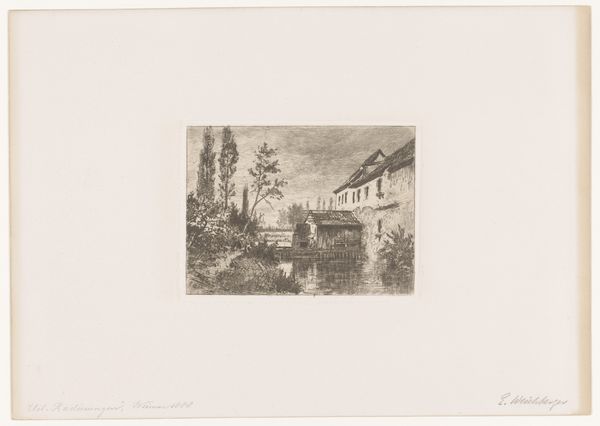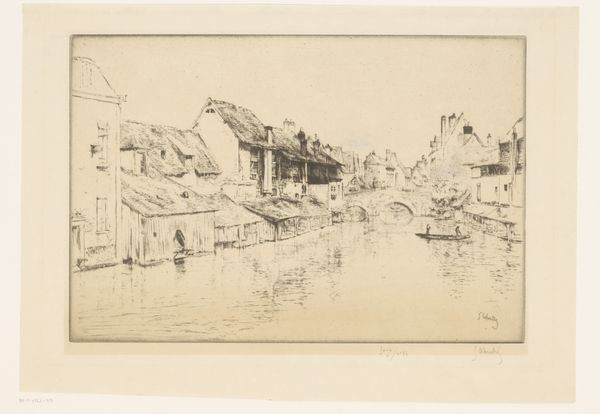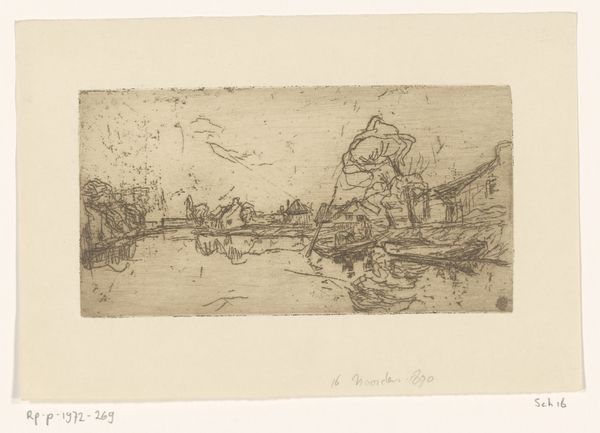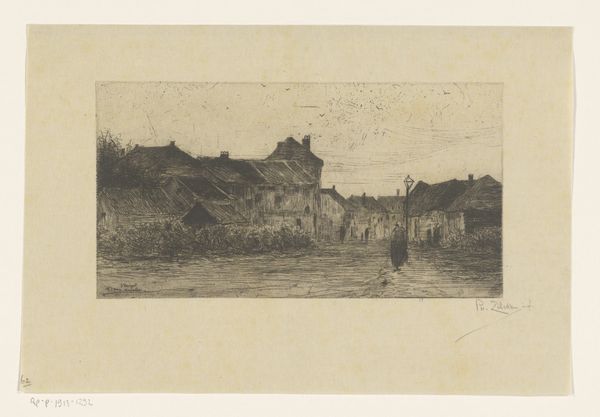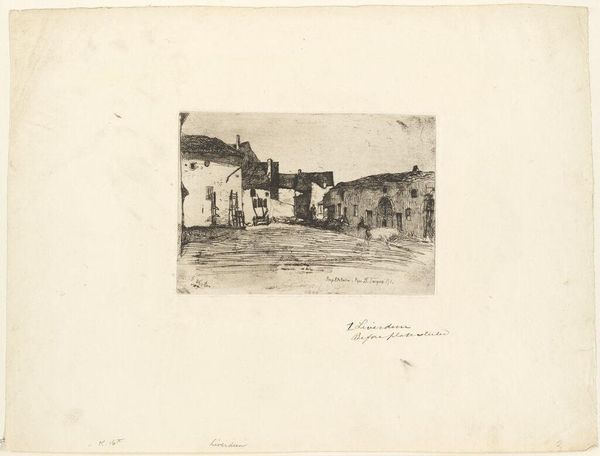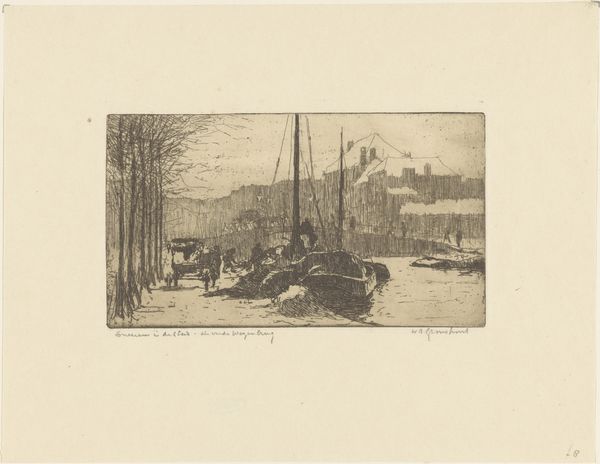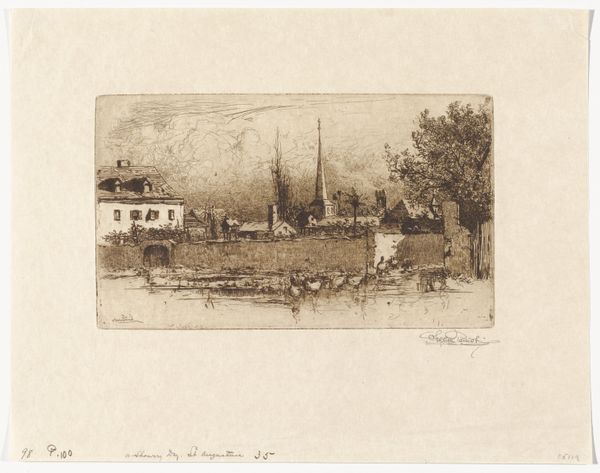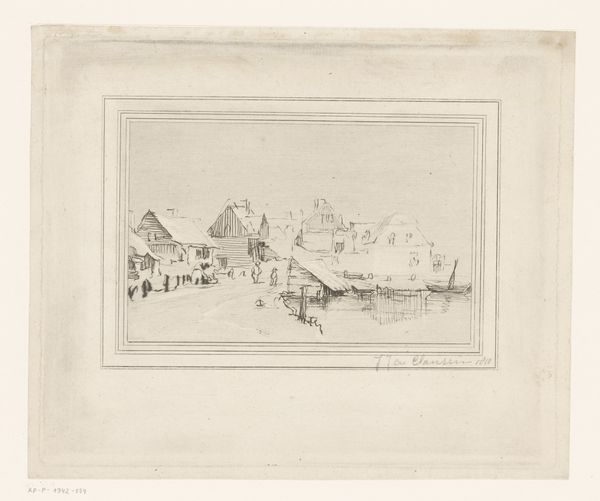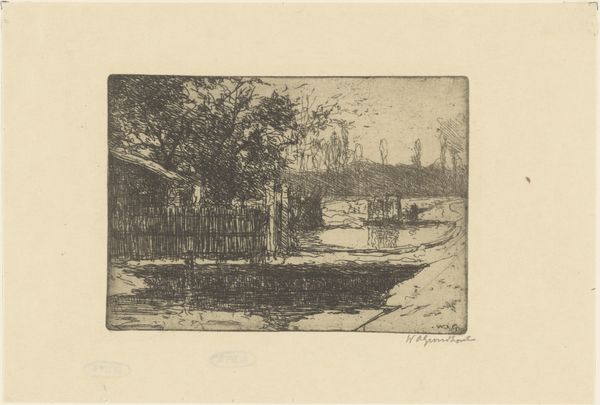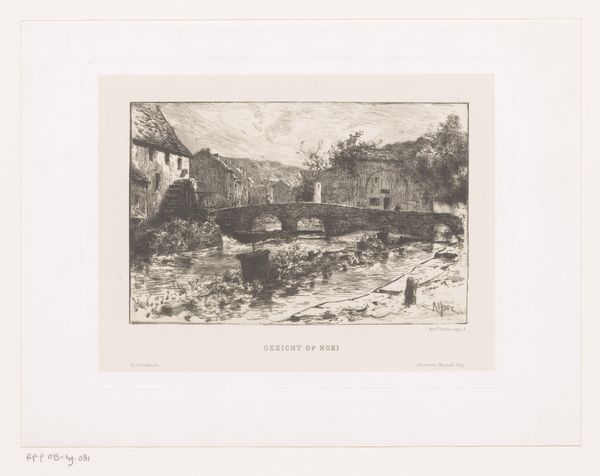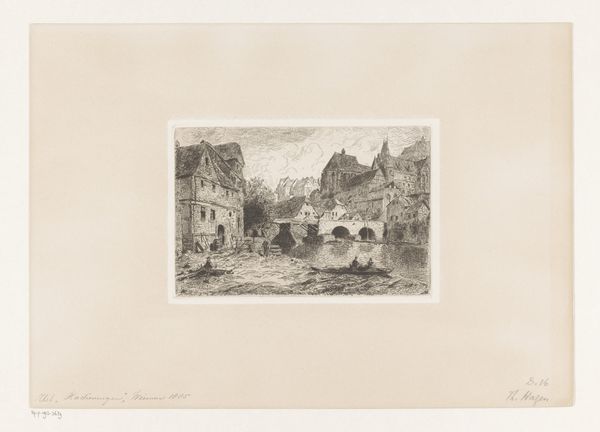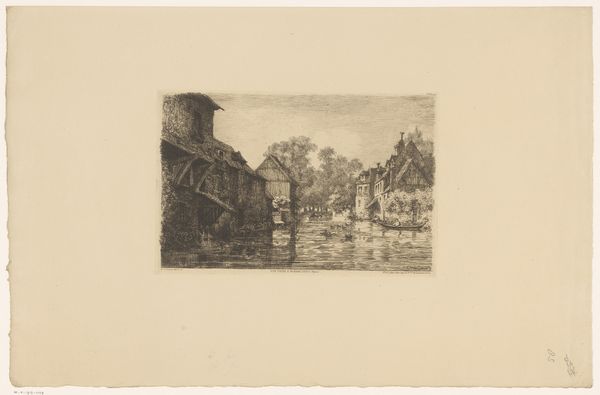
print, etching
# print
#
etching
#
landscape
#
realism
Dimensions: 5 1/2 x 7 13/16 in. (13.97 x 19.84 cm) (plate)9 1/4 x 14 1/2 in. (23.5 x 36.83 cm) (sheet)
Copyright: Public Domain
Editor: Here we have Stephen Parrish's "Normandy Cottages," an etching from the 19th century held here at the Minneapolis Institute of Art. It has this quiet, unassuming charm about it. I'm curious, what elements of the piece grab your attention? Curator: Well, focusing on the etching process itself, consider the labor involved in creating this print. The artist meticulously scratches the image onto a metal plate, controlling the depth and density of each line to manipulate light and shadow. What implications does that repetitive physical process have? Editor: That's an interesting perspective. So, you're drawing attention to the act of production itself, more than the idyllic scene depicted. Curator: Precisely. Look closely at those thatched roofs and stone walls. This isn’t just about depicting pretty cottages; it reflects a specific kind of labor, construction using locally sourced, natural materials and the specific skill-sets and manual trades to achieve. Think about the social conditions reflected in these methods. What is revealed through them? Editor: It's making me rethink the rural idyll a bit. These cottages suddenly speak to me about the lived realities and traditions of rural workers, not just aesthetic beauty. Curator: Exactly! And that hand-crafted print existing in a world becoming increasingly industrialized adds another layer to that reality. What do you think, given the historical and social context, Parrish attempts to critique with his rendering of quaint cottages using obsolete methods of art making? Editor: It creates an interesting contrast. On one hand, there's a quaint romanticization of rural life but underneath, it makes me see the hard, manual work. I hadn’t thought about it that way before. Curator: By focusing on the "how" and "why" of the artwork’s creation, we gain a more grounded and insightful view of art history, and maybe even history itself.
Comments
No comments
Be the first to comment and join the conversation on the ultimate creative platform.
